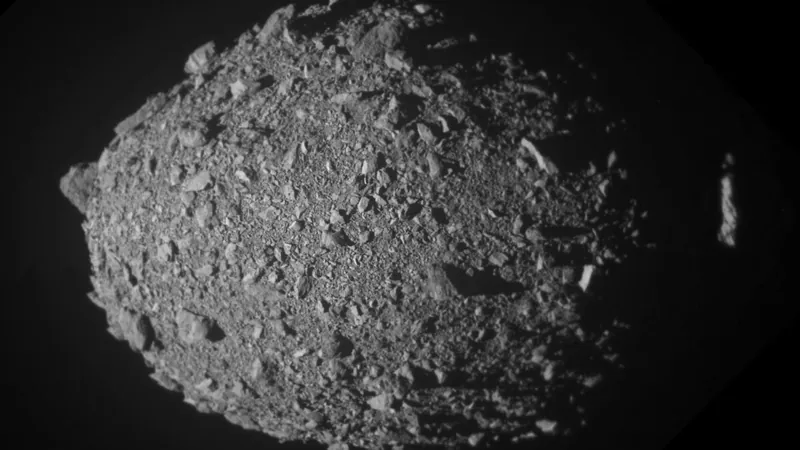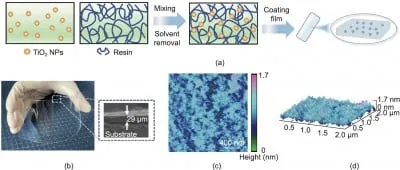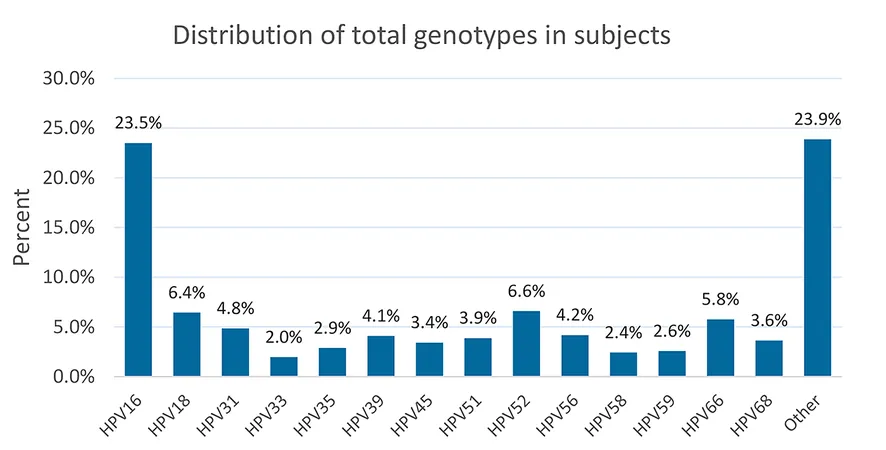
Asteroid Defense: NASA's DART Mission Unveils Surprising Complications!
2025-07-11
Author: Mei
What NASA's DART Mission Achieved
In a groundbreaking move, NASA's Double Asteroid Redirection Test (DART) slammed a spacecraft into an asteroid in 2022, aiming to prove that humanity can effectively divert a catastrophic asteroid collision. The test targeted Dimorphos, a small moon orbiting a larger asteroid named Didymos.
On September 26, 2022, DART's impact yielded astonishing results, shortening Dimorphos's orbital period by 32 minutes. This remarkable outcome indicated that the kinetic impactor technique—essentially smashing an object into an asteroid—could indeed provide a viable global defense against potential asteroid threats!
New Research Brings Unexpected Challenges
However, recent studies have complicated the narrative. Following the collision, scientists have discovered that ejecta—the debris thrown from the asteroid—played a far more significant role in altering Dimorphos's orbit than previously recognized. Tony Farnham, the lead researcher from the University of Maryland, highlighted that while DART's direct impact was crucial, the additional momentum from the erupted boulders might alter the physics behind asteroid deflection strategies.
Understanding Dimorphos: The Rubble Pile Mystery
Dimorphos, characterized as a 'rubble pile' asteroid, is essentially a loose assembly of rocks and gravel held together by gravity. This study primarily applies to similar types of asteroids. Had DART struck a solid, cohesive object, the results would likely have been dramatically different.
How Imaging Brought New Insights
Utilizing LICIACube, a satellite from the Italian Space Agency that monitored the collision, researchers tracked the aftermath of the impact. The satellite captured images of the crater as well as the explosion of debris, revealing vital information about the collision's dynamics.
The team focused on 104 boulders, measuring 1.3 to 23.6 feet (0.4 to 7.2 meters) wide, which were ejected at astonishing speeds of up to 116 miles per hour (187 kilometers per hour). What puzzled researchers was the unexpected distribution of this debris, as it was not scattered randomly, but rather clustered into distinct groups.
Surprising Patterns of Ejecta
The dominant cluster, containing 70% of the debris, shot off in a southerly direction at high speeds. The scientists believe these rocks originated from larger boulders that fractured upon DART's initial contact.
When compared to NASA's earlier Deep Impact mission, which explored a comet’s makeup, DART's rocky assault produced unique and chaotic ejecta patterns due to Dimorphos's structure. Jessica Sunshine, a co-author of the study, emphasized that the diversity of celestial bodies responds differently to impacts, which is crucial for future planetary defense missions.
The Unexpected Energy of Ejected Boulders
The kinetic energy carried by the ejected boulders constituted 1.4% of the DART spacecraft's energy, with 96% directed southward. This significant momentum could have tilted Dimorphos's orbital plane, raising concerns that it might tumble erratically in space.
The researchers concluded that understanding the total momentum of these ejected materials and the role of surface boulders will be vital in optimizing kinetic impactor missions for future asteroid threats.



 Brasil (PT)
Brasil (PT)
 Canada (EN)
Canada (EN)
 Chile (ES)
Chile (ES)
 Česko (CS)
Česko (CS)
 대한민국 (KO)
대한민국 (KO)
 España (ES)
España (ES)
 France (FR)
France (FR)
 Hong Kong (EN)
Hong Kong (EN)
 Italia (IT)
Italia (IT)
 日本 (JA)
日本 (JA)
 Magyarország (HU)
Magyarország (HU)
 Norge (NO)
Norge (NO)
 Polska (PL)
Polska (PL)
 Schweiz (DE)
Schweiz (DE)
 Singapore (EN)
Singapore (EN)
 Sverige (SV)
Sverige (SV)
 Suomi (FI)
Suomi (FI)
 Türkiye (TR)
Türkiye (TR)
 الإمارات العربية المتحدة (AR)
الإمارات العربية المتحدة (AR)